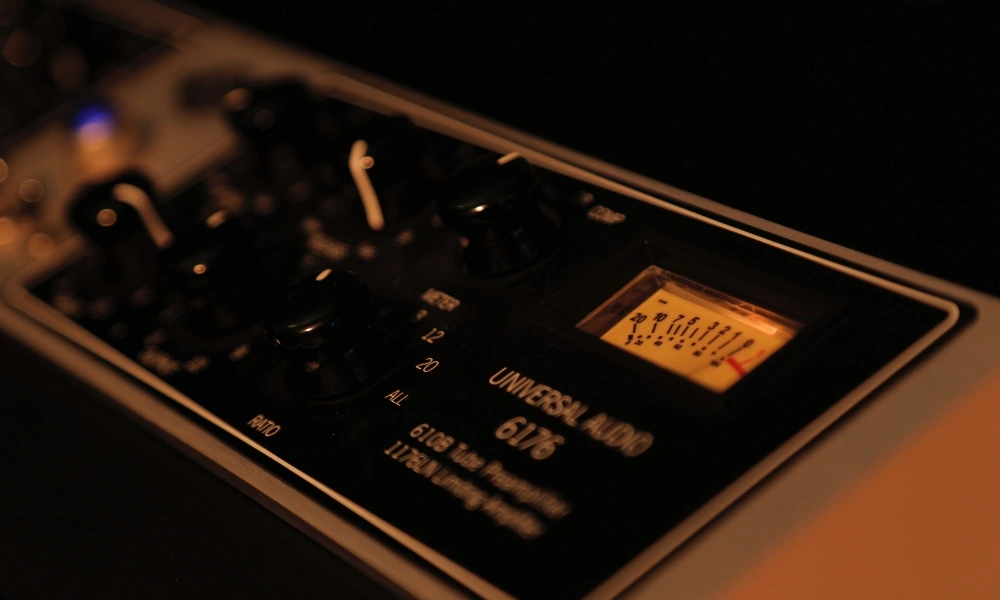How to Use Compression in Music Production

In this blog post, we’ll cover all of your compression-related problems and explain exactly what ‘compression’ is in detail.
Audio compression explained for music production beginners
When to use compression
Is compression always needed? No!
Many music production beginners think that compression is always needed, just because they “do it like that every time.” But there are different levels of compression that you can apply. Always ask yourself for what purpose you’re applying the compression. If you don’t have any purpose, don’t do it.
Apart from that, many samples today are already compressed, so they don’t need to be compressed twice - pay attention to that!
There are 3 main reasons why you should apply compression to a sound:
1. To control the dynamic range of a sound
2. To shape/colour the sound
3. To glue multiple sounds together
Let me explain each of these in detail.
1. Control the dynamic range of a sound
Dynamic range describes the difference between the loudest and the quietest part of an audio signal. An example: If you record a singer, he/she won’t be singing in the same volume all the time. To make the volume more consistent, we can now apply a compressor to adapt the louder and quieter parts.
2. Shape/colour the sound
Compressors can colour the sound in a special way. Analogue compressors especially (or their digital emulations) are good for this job. This method will give more excitement & character to your sound.
3. Glueing sounds together
This method helps to make several sounds feel like they’re all performing together. This compression technique isn’t used on a single instrument, but on a mixer bus or on the master bus instead.
How to use compression
The difficulty with compression is that we (or any other person) can’t give you a recipe on how it works, because every sound needs to be treated differently and in response to the context of your song.
That’s why it is so important to know how a compressor works and when you should use it.
Apart from that, the amount of compression depends on the genre you're producing, too. An orchestral song will be treated completely differently in comparison to an EDM track. Keep that in mind.
To understand how you should set up your compressor, let us first have a look at the knobs and parameters on the example of the Pro C2 compressor from Fabfilter. To explain it a bit easier, I have a funny metaphor for you which really helped me to understand and learn it.

A compressor is a bit like your mum.
How? Well, allow me to explain.
1. Threshold
The level she asks you to turn down the volume of your music (in technical terms, it’s the volume level you set where the compressor starts working).
2. Ratio
How much you turn down the volume after she shouted at you (in technical terms, how hard the applied compression should be).
3. Attack
How fast you turned down the volume after she shouted at you (in technical terms, how fast the compression is applied after the threshold is exceeded).
4. Release
How fast you turn the volume back up as soon as your mum closes the door (in technical terms: how fast the compression stops working).
5. Gain
With this knob you can apply additional volume after compression is done. Some compressors can do the job automatically, they will add the volume you lost due to compression.
6. Dry/Wet knob
With this knob you can apply parallel compression. This is very useful if you want to apply a heavy compression, but don’t want the signal to get lifeless and cold. Just drag the dry knob up and blend in some of the uncompressed signals.
7. Range
Range determines the maximum amount of compression (gain reduction) applied. If you set it to -10db, there will be maximum -10db compression.
8. Knee
With the knee knob, you can apply a more natural compression, if set to soft. This sounds really good on vocals, piano & guitars. If you need a heavy compression, set it to hard.
What compression settings should I use?
As we already said, we can’t give you a recipe on that but we do want to give you at least some benchmarks here…
Control the dynamic range of a sound:
- Faster attack
- Faster release
- Harder knee
- Higher ratio
Shape/colour the sound:
- Slower attack
- Slower release
- Softer knee
- Lower ratio
- Use an analogue compressor emulation if possible
Glueing sounds together:
- Medium attack
- Medium release
- Medium knee
- Lower ratio
- Range: no more than -4db gain reduction
- Only use it on mix bus or master bus
What type of compressor should I use?
Be aware that there are a few compressor types out there and they’re not the same.
Some offer fast attack times, others offer slower ones. I would recommend you to get a compressor that combines all these things. An absolute allrounder for this job is the Fabfilter Pro C2.
Author Bio
Hey, I am Marlon and I am the founder of the Producer Academy on Instagram, a learning platform for music producers like this one from Ditto here. If you want daily music production tips and a personal teacher who answers your questions (for free) and you liked this post, visit me on Instagram.



.svg)


